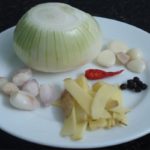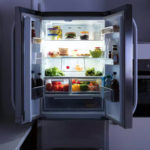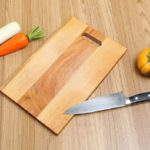To keep vegetables fresh for longer, many people tend to put them in the fridge as soon as they get home from the market, still wrapped in plastic bags. This action, although seemingly harmless, can actually negatively affect the quality and safety of the produce.
Why You Shouldn’t Put Vegetables Stored in Plastic Bags in the Fridge
Vegetables tend to have high moisture content and therefore require a well-ventilated space to maintain freshness and limit bacterial and mold growth. When vegetables are kept in sealed plastic bags, air cannot circulate and moisture becomes trapped, leading to a damp environment that promotes bacterial and mold growth, causing the vegetables to rot and spoil quickly.
The following are specific reasons why you should avoid putting vegetables stored in plastic bags in the fridge:

Absorbent paper helps control excess moisture in the fridge, keeping vegetables dry and fresh. (Image: Sajida’s LifeStyle)
To control moisture in the fridge, place an absorbent paper sheet under the vegetables. This will soak up excess moisture and keep the vegetables dry and fresh.
Specific Storage Tips for Different Types of Vegetables
For leafy greens such as spinach, water spinach, and amaranth, store them in cloth bags or airtight containers with air holes. You can also wrap them in damp paper towels before placing them in the container to maintain adequate moisture.
For root vegetables like carrots, radishes, and onions, store them in cloth bags or directly in the crisper drawer of your fridge. Ensure they are not damp and have adequate ventilation.
For fruits like apples, pears, and cucumbers, use airtight containers with air holes or paper bags for storage. For highly perishable fruits like strawberries and grapes, check them regularly and remove any spoiled ones to prevent the spread of rot.
According to VTC News
More Useful Advice for Homemakers (Part 2)
Have you heard of the surprisingly easy tips to make cooking and household chores simpler? White radish eliminates the acrid taste of salted meat, adding alum to raw shrimp helps soften it, and adding cold water when frying eggs can make them crispy – these are just a few of the tricks to make your life easier.
8 Common Mistakes People Make with Cutting Boards
Are you using your cutting board correctly? Many Vietnamese households rely on cutting boards in their kitchen, but not everyone knows how to use them properly, especially when it comes to wooden cutting boards. Check out these 8 mistakes to avoid when using a cutting board to ensure both hygiene and safety for everyone in your family.




































